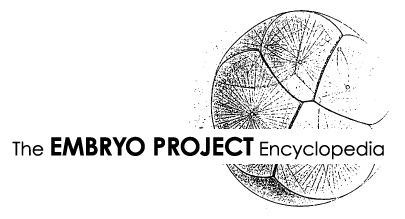Embryo Project
The Embryo Project helps identify and understand the agents of change shaping embryo research and its multiple contexts. We started from the historical recognition that science involves a mix of contingencies influenced by (1) particular actors working in particular places, (2) decisions about what organisms to study, equipment to use, experiments to design, and other technical factors that make possible scientific practices, and (3) the multiple social and cultural contextual factors that shape what is possible in science.
As the Project has developed, we have focused on identifying and analyzing several defined categories of factors — people, places, organizations, technologies, organisms, concepts, contexts, literature, and images — and their often intricately linked relationships with each other. The Project will make available resources that will address these intertwined relationships and as a result, identify the agents of change at work in the complex arena of embryo research.
To date, we have three kinds of findings in addition to the usual sorts of scholarly publications:
- The Science. Because of the way we are examining the science, looking at the different factors as agents of change, we are already seeing things differently than we previously did. Traditional historical work selects from among the vast world of empirical facts to tell a story. Instead, we are telling many smaller stories and are finding that the linking among the pieces is much richer and much more revealing about the multitude of agents shaping scientific change that we had imagined.
- The Process. The process of identifying projects and building collaborative networks of researchers who previously did not work together, as well as bringing undergraduate and graduate students and a postdoctoral fellow into the research team has been extraordinary. We each challenge each others' assumptions and already find ourselves asking different questions in different ways than we used to. In addition, we are finding ourselves working as a team that interacts many times a day and learns from each other. This is exciting.
- The Encyclopedia. All our work — articles, scholarly interpretive essays, images, videos — is captured and stored in a Fedora repository and the relationships between them can be searched and visualized. This part of the Project is under constant testing and development, with new features and tools planned. The Arizona State University Library, the Marine Biological Laboratory, and Max Planck Institute for the History of Science in Berlin are collaborating on the technological work.
Published articles related to the Embryo Project:
- Maienschein, J. and M. Laubichler. 2010. "The Embryo Project: An Integrated Approach to History, Practices, and Social Contexts of Embryo Research" Journal of the History of Biology 43: 1-16. DOI: 10.1007/s10739-009-9204-1].
- Laubichler, M.D., J. Maienschein, and G. Yamashita. 2007. "The Embryo Project and the Emergence of a Digital Infrastructure for History and Philosophy of Science" Annals of the History and Philosophy of Biology. 12: 79-96. For a copy of this paper, please contact Manfred Laubichler

